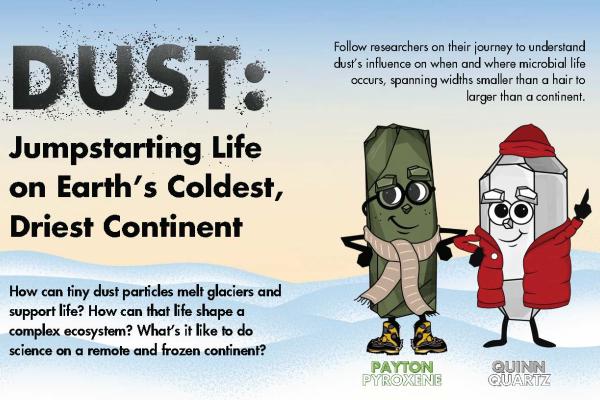Dust: Jumpstarting Life on Earth’s Coldest, Driest Continent

A new traveling exhibit titled "Dust: Jumpstarting Life on Earth’s Coldest, Driest Continent" is set to unveil the fascinating interplay between microscopic dust particles and the harsh Antarctic environment. Developed by a collaborative team from Kenyon College, Boise State University, and The Ohio State University, this exhibit explores how tiny particles interact with glaciers and snowbanks to release essential nutrients that support microbial life in the McMurdo Dry Valleys of Antarctica. By employing advanced scientific techniques such as microscopy, freeze-thaw experimentation, and energy balance modeling, researchers aim to deepen our understanding of mineral weathering in glacial landscapes and the broader implications for ecosystems.
The exhibit will guide visitors on a journey through varying scales, from the microscopic details revealed through scanning electron microscopy to the grand expanse of the Antarctic continent itself. Unique anthropomorphized mineral characters, Peyton Pyroxene and Quinn Quartz, narrate their experiences, providing insights into how they weather over time and contribute to nutrient cycling in extreme environments. Interactive displays and activities will invite attendees to engage with the research, fostering a deeper appreciation for the scientific process and the life forms that depend on these vital minerals.
The design process has been both collaborative and iterative, involving close cooperation with researchers to shape an engaging narrative that guides visitors through the story of dust's impact on life in extreme environments. Ohio State design student Haylen Scott started by sketching anthropomorphized mineral characters and creating digital layouts, exploring effective ways to communicate the complex processes of weathering and nutrient release. Using a variety of design tools—from CAD software to physical prototypes—she visualized each exhibit space and its interactive components. Regular feedback sessions were crucial for refining ideas and addressing logistical constraints, such as mounting photographs and developing activities for attendees. This collaborative effort enhanced the overall design, ensuring that the exhibit resonates with a diverse audience while effectively conveying the significance of dust in Antarctic ecosystems.
This exhibit is the result of efforts from various contributors, including the guidance of Jason Cervenec, Education and Outreach Director at the Byrd Polar and Climate Research Center, and exhibit fabrication support from Paul Green. Special thanks to Kenyon students William Bryant and Jordan Schisler, whose curation of images and writing of text were instrumental to the exhibit. The project would not have been possible without the insights and expertise of the research team, including Anna Bergstrom, Melisa Diaz, Sue Welch, and Ruth Heindel. The exhibit will debut in the Bulmash Exhibition Hall at Kenyon College in early November 2024, with plans to travel to other institutions, including Boise State University. Through outreach programs, local students and community members will have the opportunity to explore these themes and engage with polar science in accessible and meaningful ways.
